
Solar panels are a very versatile source of energy. Installation sizes can range from as few as 3 to 4 panels installed on the rooftop of an individual home, to millions of panels installed for a utility scale power plant. The adoption of rooftop solar installation by individual families for their homes is growing rapidly in India. This has been accelerated by the net-metering and subsidy policies rolled out by the Ministry of New & Renewable Energy (MNRE) and electricity distribution companies (Discoms).
This article provides an overview of how solar panels are installed, factors to consider and best practices to follow to ensure –
- a safe & reliable installation with minimum system downtime
- maximized power generation for the installation location
- long life with minimal maintenance & component replacement
- electrical safety
- minimized risk of damage during cyclones & high wind conditions
Components of Solar System
The following components constitute a typical rooftop solar system installed on an individual home –
- Solar panels / solar modules
- Inverter
- Solar mounting structures
- DC Cables
- AC Cables
- DC Combiner Box
- AC Combiner Box
- Lightning Arrester
- Earthing kits & Earthing cables
- Conduit pipes or cable trays for routing cables
- MC4 connectors
- Electrical connection components
The above components constitute a grid-connected solar system, where solar power is generated only when the system is connected to the electricity grid. These are the most common type of system installed on residential rooftops in cities & towns where grid shutdown is rare. Off-grid or hybrid systems can generate & supply power even when not connected to the electricity grid. Here batteries are also required to store the electricity generated. These are used in rural areas not connected to electricity grid.
As can be seen above, solar panels are only one of the components of the entire solar system. For a well-engineered solar panel installation, it is important to focus not only on the selection of solar panel technology & make, but also –
- Selection of right specifications & quality of all other components
- Engaging professional teams trained in following delivery, handling & installation Standard Operating Procedures of all components
- Use of specialized purpose-built tools for installation
In the next sections, we will learn about the same in greater detail.
Choosing the Location, Direction & Angle for Solar Installation
The most important factor in selection of location of solar panel installation is the availability of shadow-free area. For a typical rooftop installation on an individual home, we encounter a number of shadow casting objects such as nearby trees, adjacent houses or buildings, mobile towers, water tanks, staircase rooms or mumties, satellite dishes, etc. Although we might feel that an area is free of shadow to the naked eye, it is not possible to say with certainty that there shall be no shadows at all times of day and throughout the entire year.
Shadow analysis using softwares such as Google SketchUp is required to check and ensure that the installation will remain shadow-free from 9 AM to 4 PM throughout the year. At SolarSquare, we conduct a thorough Detailed Engineering Visit by a trained professional to record all shadow casting objects and their locations and heights. This is used by our design team to carry out shadow analysis and create a plant layout that minimizes shadow (shown below).
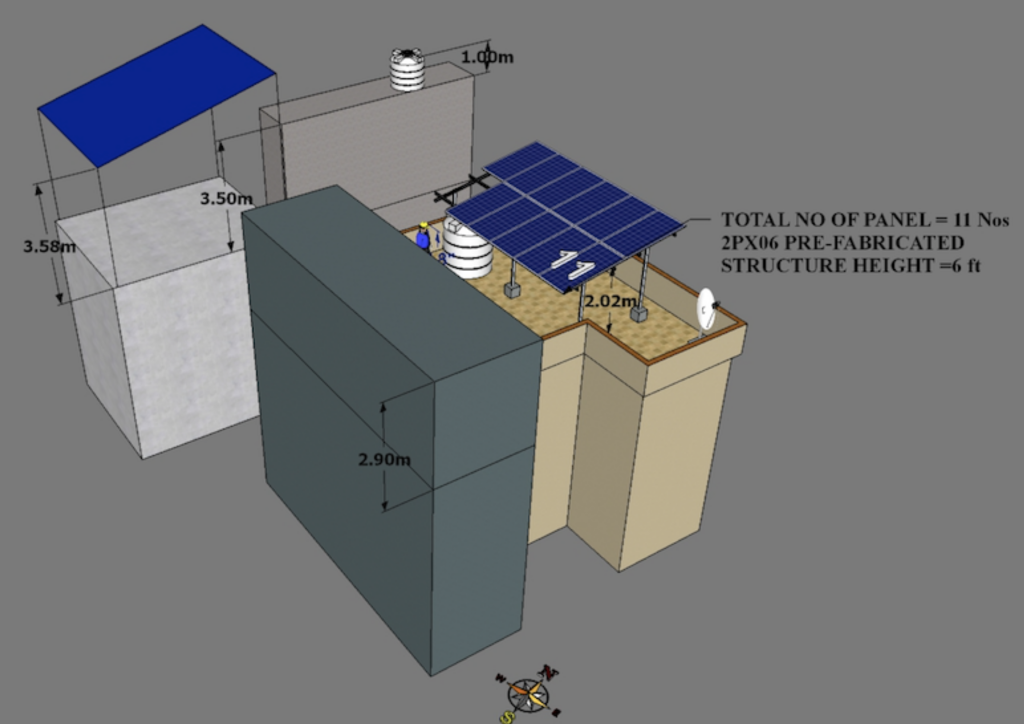
As India is in the northern hemisphere, the direction of solar panels should be towards the south to maximize the solar radiation received. Direction towards east or west also can be considered if south is not possible due to constraints in the area available. For example, for an installation in Pune, the annual energy generation for an east or west facing system is approximately 4 to 5% less than a south facing system. North direction of solar panels should be avoided as it will result in a significant reduction in energy generation.
The tilt or slope angle to be provided to the solar panels should ideally be equal to the latitude of the location to maximize energy generation. This ranges from 10 deg in South India to 30 deg in North India.
Apart from location of solar panels, it is also important to choose appropriate locations for other components such as inverter, lightning arrester & earthing. Solar inverters should be installed in an indoor location or in shade from direct sunlight. They must be at eye level (around 4 to 5 ft height from ground) for ease of monitoring & maintenance.
Also read: Checklist for solar rooftops
How To Install Solar Panels On Roof
The first component installed before solar panels are the solar mounting structures. Depending on the type of roof, there is a variety of mounting structures available – for installation on metallic shed, on RCC terrace, on Mangalore tiles, and so on. Increasing the height of mounting structures on an RCC terrace can reduce the shadow cast on solar panels and also allow the terrace area underneath the panels to be utilized for other purposes.
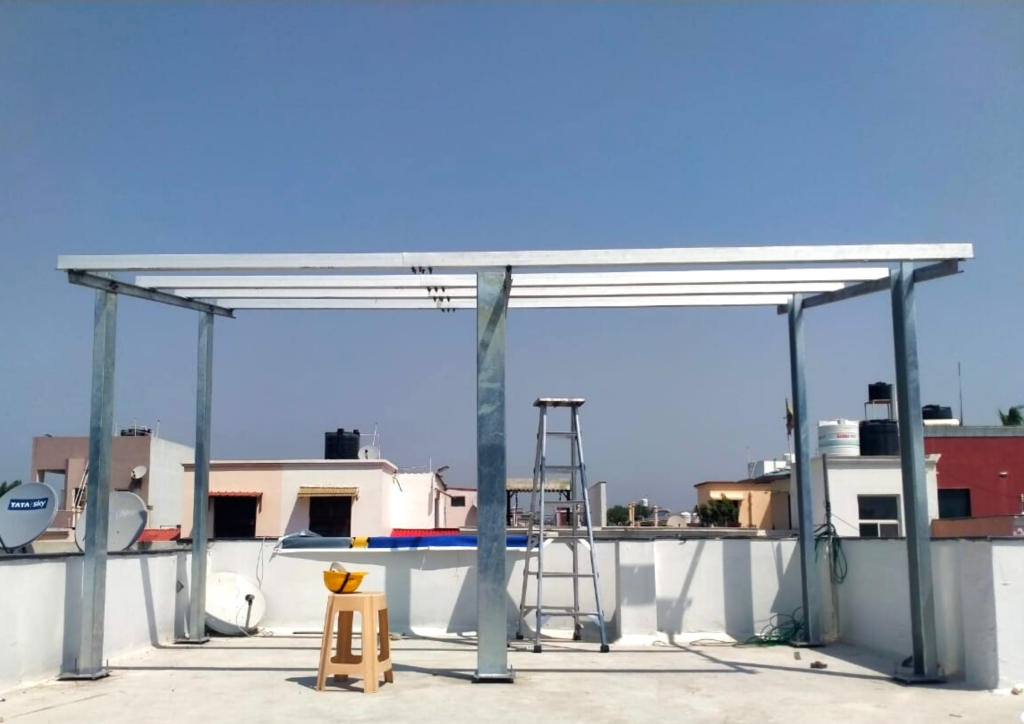
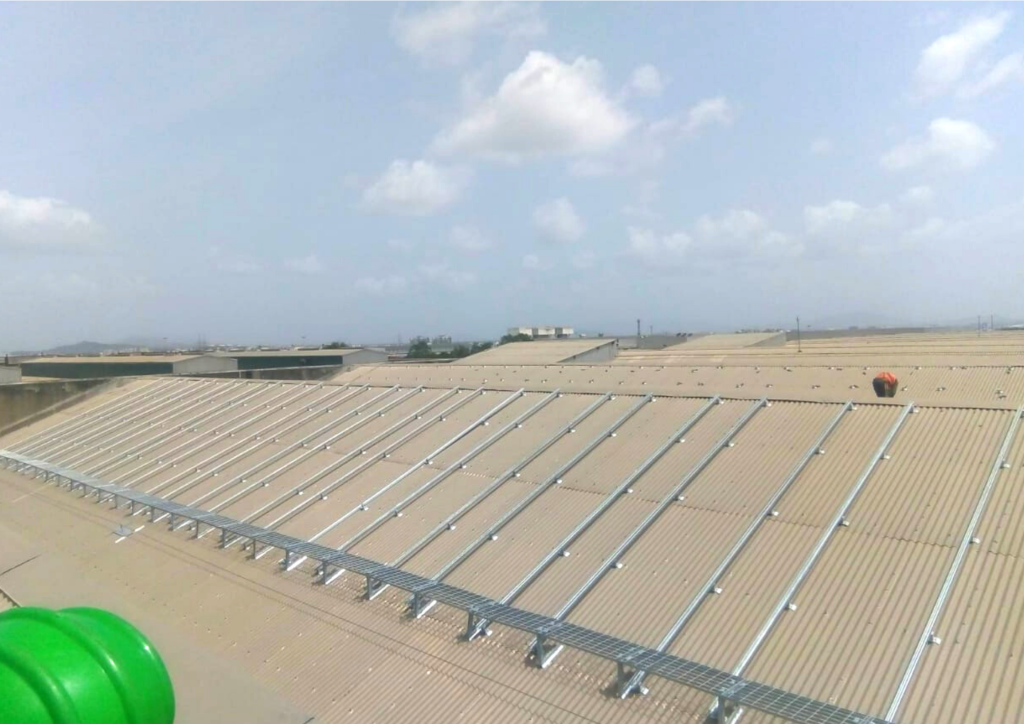
Mounting Structures are the most critical component to ensure the solar panel installation is safe during heavy winds & cyclones. They have to be evaluated in software such as STAAD.pro for the wind loads applicable at the installation location, using the parameters defined by Indian Standard IS 875.
It is also important to evaluate the method used to fix the structures to the roof and ensure it does not lead to water leakage through holes drilled in the roof. Another factor for consideration is the material used & coating provided on the structures. Steel & aluminium are the most commonly used materials. Steel should be galvanized for corrosion protection. Welding of structure components on-site must be avoided as it leads to removal of protective coating and accelerates rusting.
Solar panels are installed on the mounting structures using clamps or nut-bolt fasteners. It is critical to ensure solar panel installation is done in adherence to the manufacturer’s installation manual. Any deviations from the instructions may lead to the manufacturer’s warranty on the panels being void. Appropriate handling & lifting of panels as per the manufacturer’s guidelines is also very critical to ensure there is no invisible damage to the silicon cells inside the panel. Only trained & experienced professional teams should be engaged for this activity. Specialized tools such as torque wrench should be used for the assembly of mounting structures & solar panels to ensure that all connections are fully tightened.
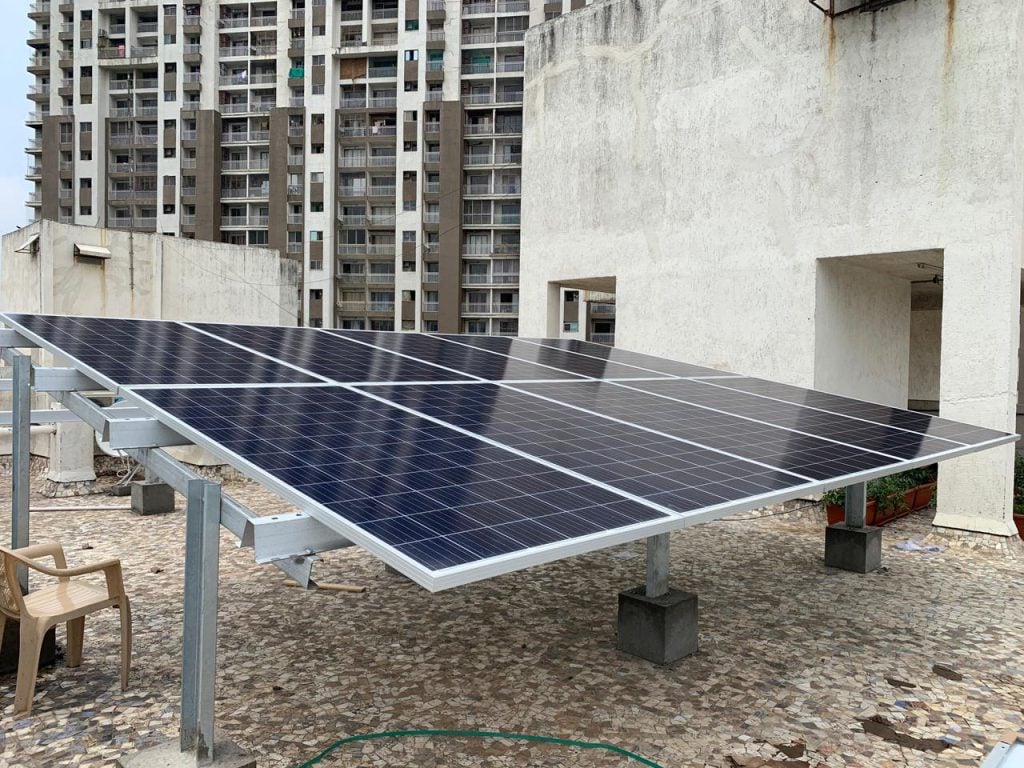
Inverter Installation & Electrical Wiring
Solar panels are connected in series by connecting the positive cable of one panel to the negative cable of the next panel and so on. This is called a string, whose output voltage is the sum of the voltage of all panels connected in series. Depending on the project and inverter capacity, multiple such strings are created and are connected in parallel.
Each string is connected to a DC Combiner Box, which provides electrical surge protection & DC isolation, and then to the inverter using solar-grade DC cables. All DC cable connections are done using MC4 connectors, which should be crimped on the cables using a specialized MC4 crimping tool only. As string voltages are in the range of 1000 V DC, DC wiring is a potential source of electrical shock and short circuit if the connections are loose or done using improper tools.
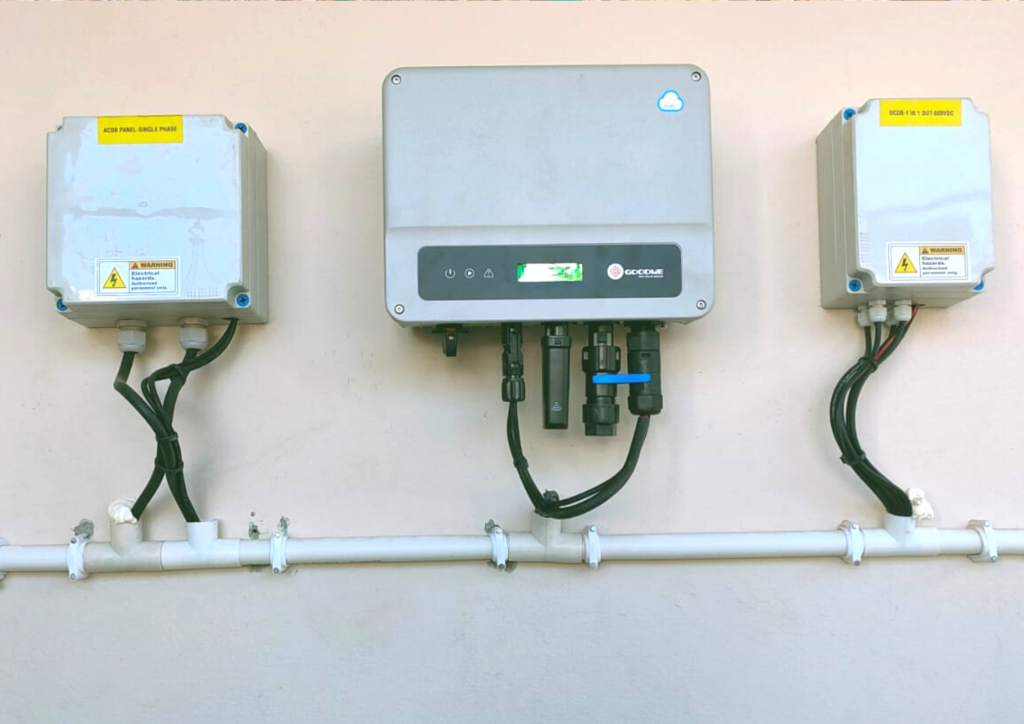
The inverter output is connected to the electricity grid at the energy meter via an AC Combiner Box, which provides electrical surge protection & AC isolation. Electrical lugs of appropriate size as per the cable size must be used for AC cable connections with electrical termination standard practices followed.
All cables are routed inside PVC or HDPE conduit pipes for protection. Cable trays may be used in case of a large number of DC strings or large size of AC cables. Cable routing in pipes or trays requires very precise alignment, which has a big impact on the overall aesthetics of the installation.
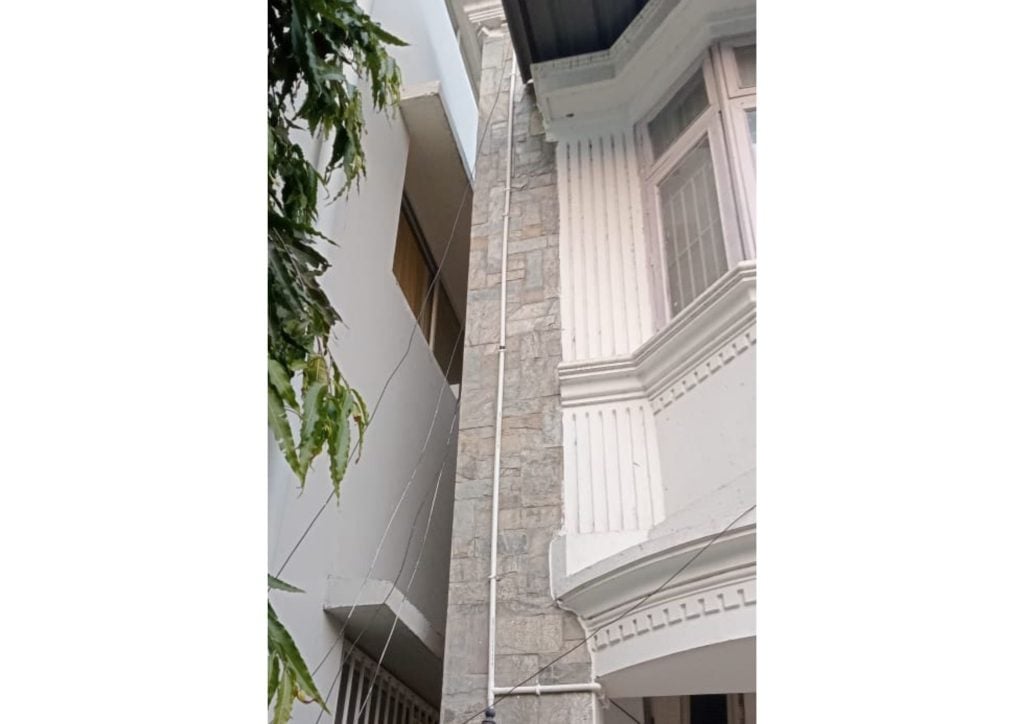
For a residential solar system, the energy meter is replaced by a bi-directional net meter by the Discom. The net meter measures both the no. of units of electricity imported from the grid as well as exported to the grid and the consumer is charged for the net units consumed (import units minus export units).
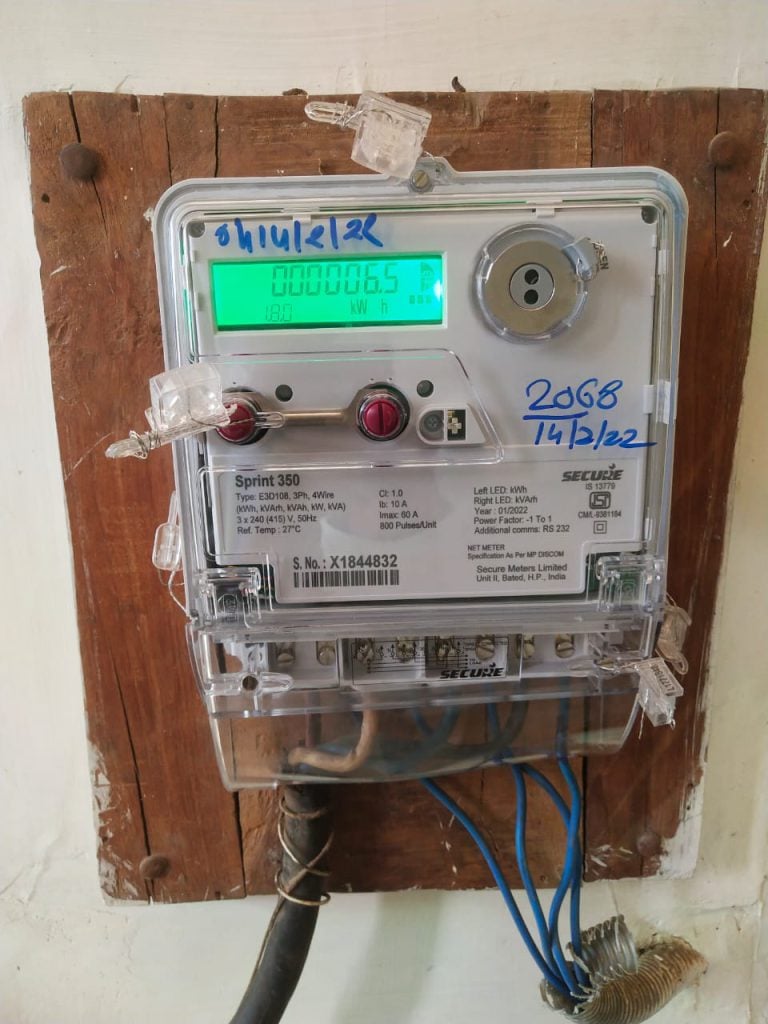
Earthing & Lightning Protection
Earthing is provided to the DC components (solar panels & DC combiner box) and AC components (inverter & AC combiner box) using separate earthing cables. The earthing grid is created using maintenance-free earthing kits consisting of earthing rods & chemical compounds. Earthing should be provided preferably in soft soil rather than concrete or tiled area, with a spacing of 2 to 3m between each earthing rod. It should be as close to the solar installation as possible to reduce the length of cables used.
A Franklin rod type lightning arrester is installed near the solar panels at a height at least 1m above the panels. They should not cast a shadow on the panels at any time of the day. It is connected to the earthing grid using an earthing cable sized 16 sq mm or higher.
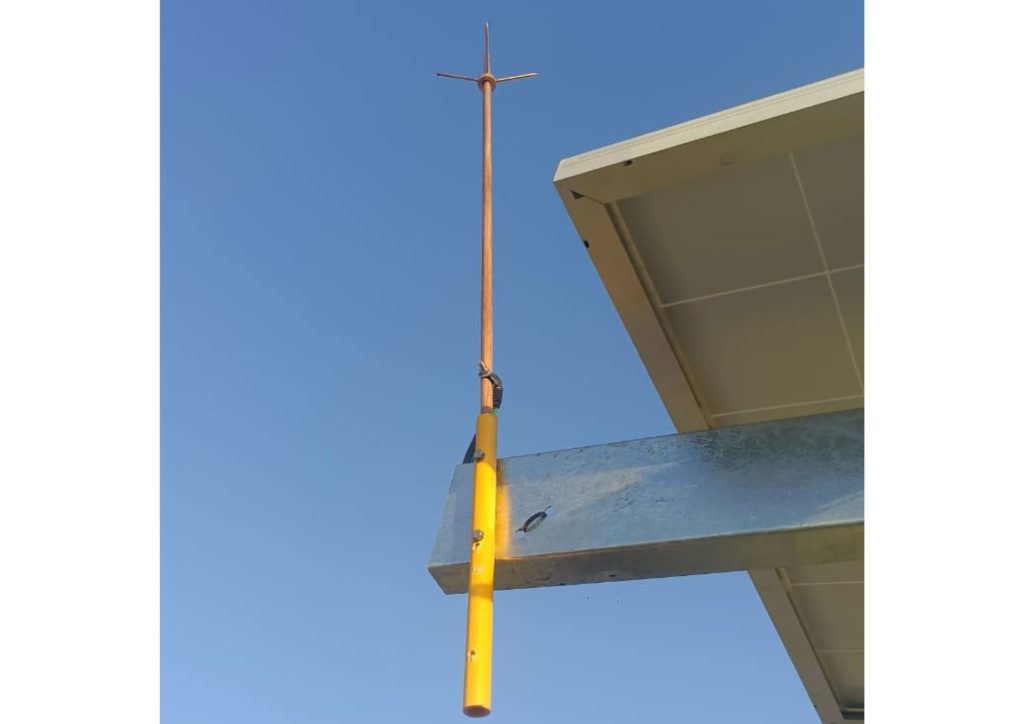
Commissioning of Solar System
Once all connections as described above are done and the energy meter is replaced with a net meter by the Discom, the system is ready for charging and generation. The output voltage of the DC strings and the phase sequence of AC connection is checked before the inverter is switched on. The digital display on the inverter is used to monitor the units generated and basic voltage & current parameters, to confirm that the system is functioning smoothly.
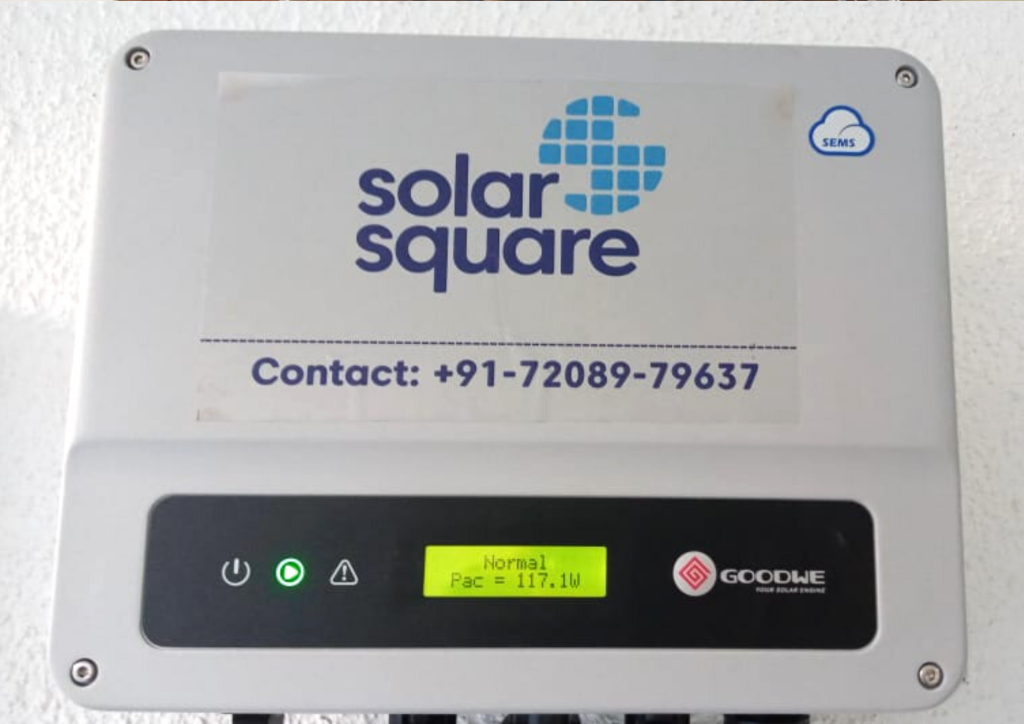
The inverter is then connected to the internet using a WiFi signal available at the inverter location, or using a sim-based dongle. Internet connection is required for real-time online monitoring of plant performance. This helps to identify issues in generation and rectify them at the earliest to minimize downtime.
Conclusion
In summary, a good quality solar installation is nothing but the result of good planning and execution. It starts with thorough system design to evaluate shadows, ensure mounting structure stability in wind loads, and careful selection of electrical components. A well-trained professional team must then be engaged to ensure correct handling of all components and flawless project execution following all Standard Operating Procedures.
We hope this article helps you in your journey towards installing solar panels at your home and helps you get a well designed, reliable and value-for-money system installed from your solar installer.
Frequently Asked Questions
1) How to know if my home is suited for solar panels?
Solar panels require 100 sq ft area per kW. An average Indian home with monthly electricity bill of Rs. 2000 will require 200 to 300 sq ft for a 2 to 3 kW solar panel installation. This area must be completely free of shadow throughout the day, throughout the year. RCC terraces, sheds with metallic roof sheets or Mangalore tiles are the most common roof types on which solar panels are installed.
2) Are there permissions required to install solar panels?
Permission is required from your local Discom (electricity distribution company) to install solar panels for a grid-connected or on-grid system. A net metering application is submitted to the Discom. They check the feasibility and replace the existing electricity meter in your home with a net meter. The net meter measures both the units of electricity imported from the grid & exported back to the grid by solar. Consumer is charged for only the net imported units (subtracting exported units) in their electricity bill.
Permissions are not required to install off-grid solar systems which are not connected to electricity grid and supply power to the home completely using electricity stored in batteries charged by solar panels.
3) How much does it cost to install solar panels?
Cost of a solar installation includes the cost of panels, all other components, installation, Discom applications & commissioning. It varies significantly depending on the type of panels, inverter and mounting structure selected, and whether project is done with MNRE subsidy. A residential system installed under subsidy, using average quality solar panels & inverters can start from Rs. 40,000 per kW while another system without subsidy, using Tier 1 Mono solar panel technology, latest generation micro-inverters and an overhead elevated structure to install solar panels can cost over Rs. 70,000 per kW.
4) How to maintain solar panels?
Solar panels require fortnightly to quarterly cleaning using soft tap water and brushes with soft nylon bristles designed specifically for cleaning solar panels. Other types of brushes leave scratches or threads on the glass surface.
Quarterly to half yearly preventive maintenance is carried out to ensure solar system remains in good health. 24×7 online monitoring of power generation 365 days a year is done to identify any drop or shutdown of generation and take corrective actions immediately to minimize system down time.
These activities have to be diligently carried out for several years to ensure good generation and hence good financial returns on your investment in solar panels. Hence, the comprehensive AMC services offered should be evaluated before choosing the right solar company to install solar panels at your home.
5) Can I install solar panels by myself?
This article gives a brief overview of how solar panels are installed. The solar system should be expertly designed using sophisticated softwares. Then several components are selected, purchased and installed following the manufacturer’s specifications and using specific tools designed for solar installation. The periodic cleaning, maintenance and online monitoring of a system after installation is also a specialized function done for several years.
It is difficult for an individual to learn & carry out all the above steps. Solar companies with the expertise across all the steps in installation and maintenance and who can advise you on the right choice of components & technologies should be chosen to ensure a reliable, long-lasting, beautiful installation.
